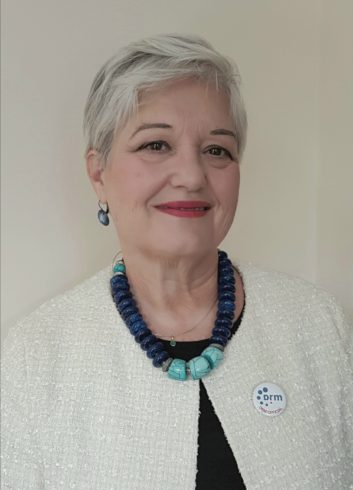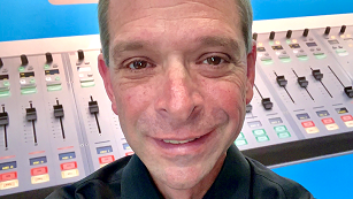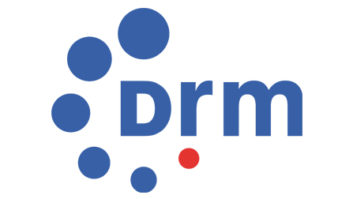The author is chairman of Digital Radio Mondiale. Her commentaries appear regularly in Radio World.
 Radio digitization news continues to trickle in, even if COVID-19 has frozen many projects and turned radio events, even world ones like IBC 2020 or CES 2021, primarily into Zoom sessions.
Radio digitization news continues to trickle in, even if COVID-19 has frozen many projects and turned radio events, even world ones like IBC 2020 or CES 2021, primarily into Zoom sessions.
But those interested in digital radio can continue to read the “for-and-against” regarding the possible introduction of pure HD Radio on medium-wave in the U.S., still under discussion. Or they can catch up with news about the future of DAB+ in Switzerland or France.
DRM is there, too, with the excellent trials and measurements carried out recently by the Indonesian public broadcaster (RRI) at three stations, where DRM is delivering audio, data and emergency warnings in the FM band. There are other DRM developments in India, Russia and China.
Depending on what continent or technology is of interest, there is plenty of news about digital radio. But, ultimately, what we have is a patchy quilt of standards that all aspire individually to be continental or even global. Why is there this fragmentation?
“Intrinsically Partial”
The reasons are many.
HD Radio and DAB/DAB+ offer intrinsically partial digitization solutions. HD Radio was invented and deployed in the U.S. in the FM band; and now the discussion is about pure HD in medium wave. Is it possible; is it wise? Will it work? These are questions are now in the FCC in-tray.
On the other hand, DAB/DAB+ was conceived just for the local VHF band III, when vacant or partially vacant, as television goes digital and moves out to higher frequency pastures.
DRM is the only standard that can be deployed in all broadcasting bands and can offer alone local, regional, national and international coverage, if necessary, though there are few countries in the world that use simultaneously all the existing HF, AM, HF VHF bands (I, II and III).
To make things even more complicated, DRM and DAB/DAB+ are open standards, sharing a lot of features and open to cost-cutting IP license synergies. HD Radio, on the other hand, is a proprietorial standard, i.e. its DNA is owned by an U.S. commercial company, Xperi. Like DRM it offers an in-band solution, different from the multiplexed DAB+ model.
Confused? Imagine then the regulators, governments and other entities that must choose which digital path to take, when each of the almost 200 countries in the world is genuinely unique.
It is not just about size, topography or history. It is also about each country’s legacy and radio journey, with its specific characteristics inextricably linked to its culture, customs, languages, expectations.
Unending Criteria
So, which is the best standard?
ITU recommends them all three. The question is rather what the needs are (broadcasters’ and listeners’ alike) that digital radio is required to fulfill in each small, medium or large country.
The criteria might be linked to spectrum and broadcast capacity, energy use and savings, features (audio but also data), disaster warning capability or, nowadays, capacity to deliver besides general information, entertainment education, too.
And then comes the tricky question of the receiver availability, in cars, in homes or in mobiles, though no manufacturer will flood a market if a country administration or government has not indicated its digital radio preference. And those receivers won’t sell, if there is not enough coverage with digital broadcasts.
The list of criteria is unending. Focusing on the listeners’ needs and expectations is probably the best starting point.
Recently, the government of South Africa has looked at some of these criteria. After many trials, deliberations, working visits, impressive activities undertaken by various lobbies (like those representing the 11 million disabled people in the country), committed organizations (community, religious, commercial stations), industrial groups and enthusiastic individuals, it pragmatically has recommended the two open standards together, DRM and DAB+, for full potential and good country coverage.
In some places this development was presented as “South Africa Publishes Policy Directive for DAB+”, which it is, but not only DAB+. That’s a bit like saying 24 hours has only night or only day.
The DRM Consortium sees the dual recommendation from Pretoria as a historic decision for the whole of the African continent, an example to other countries in Africa, Asia and Europe. They have, or they will have to, opt for digital radio sooner or later. If they go for a combination of DRM and DAB+, all the conditions exist to offer full services to all citizens of a country, no matter where they are.
Some are wondering if there will be receivers to receive both DRM and DAB+. As chipsets are the heart of any receiver, the answer is yes.
The big infotainment chipset suppliers exist. For standalone receivers, the solution must be to use more innovative chipsets than what we have seen for the last 20 years or so. Software-defined receivers can easily surmount the dual (or any) standard questions.
There are already millions of DAB receivers (an achievement to be commended), mostly in places like the U.K., Australia and Norway. And there are over 2 million cars with DRM receivers in India, a pure DRM country. This is not trivial. In the U.K., standalone receivers are mainly DAB, although the newer DAB+ version is also on sale. Car receivers can be software-upgraded; and cars are driving radio.
So there are solutions; and the “multiple standard” approach might become the real breakthrough for digital radio.
There is already a BC and AC distinction — “before COVID-19 and after COVID-19.” In the new normal, with its tough economic realities but also renewed entrepreneurial spirit, there will be optimum solutions so that digital radio policies like South Africa’s do not remain only on paper.
Radio World welcomes comments on this or any story.







